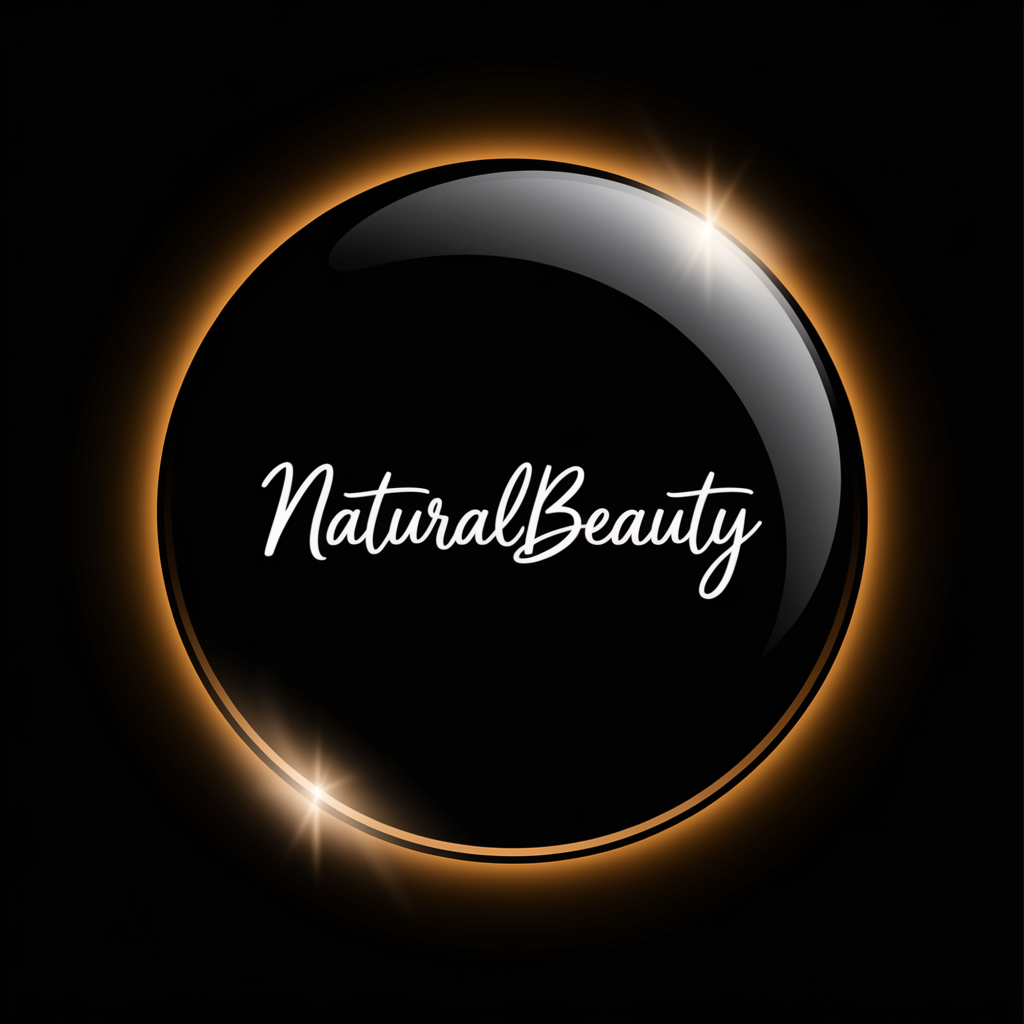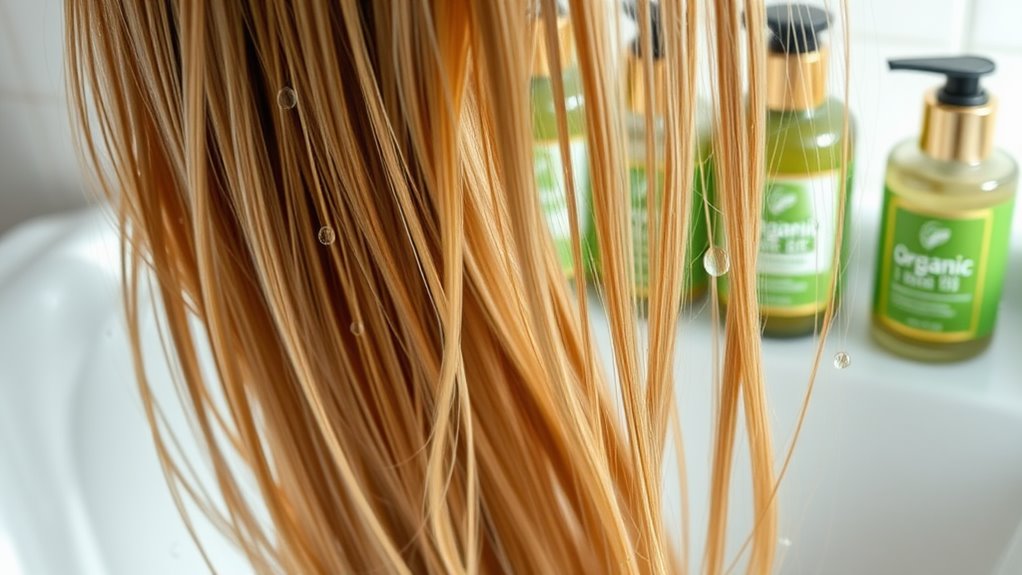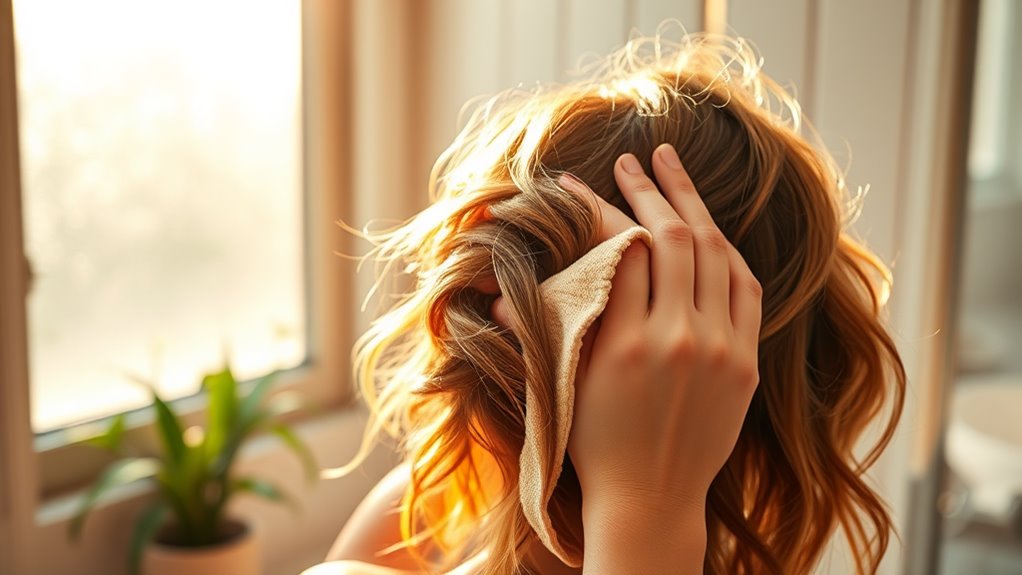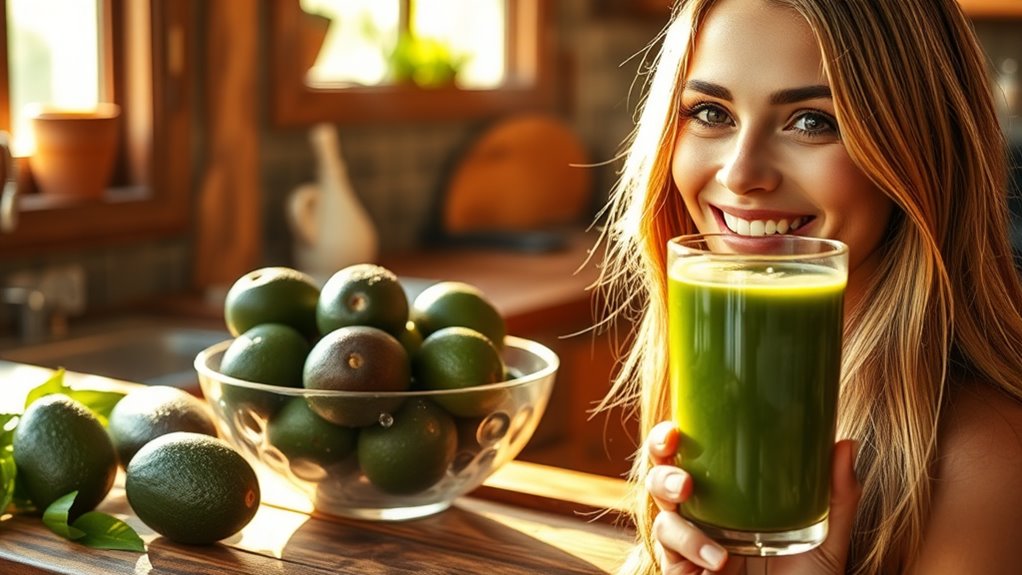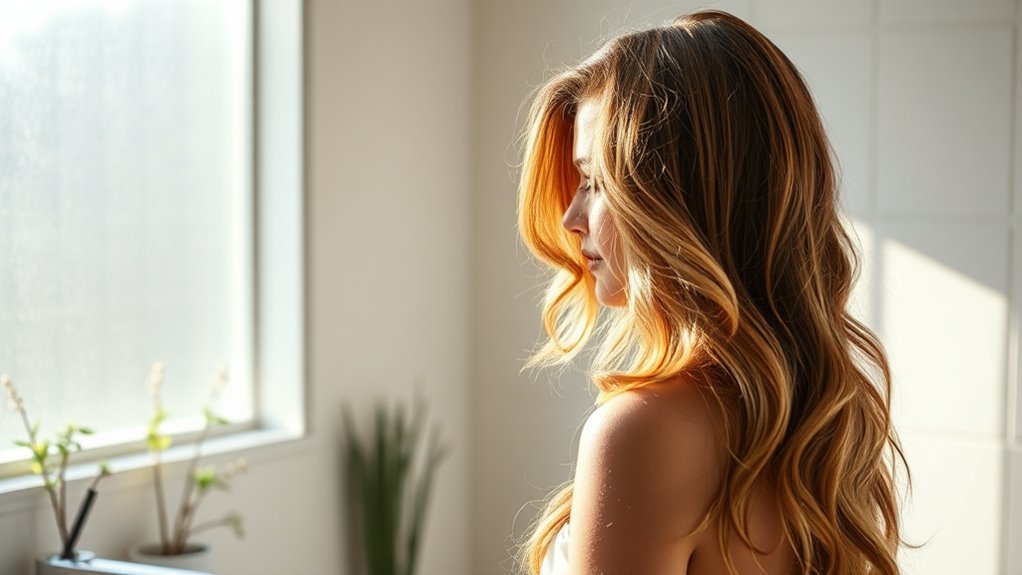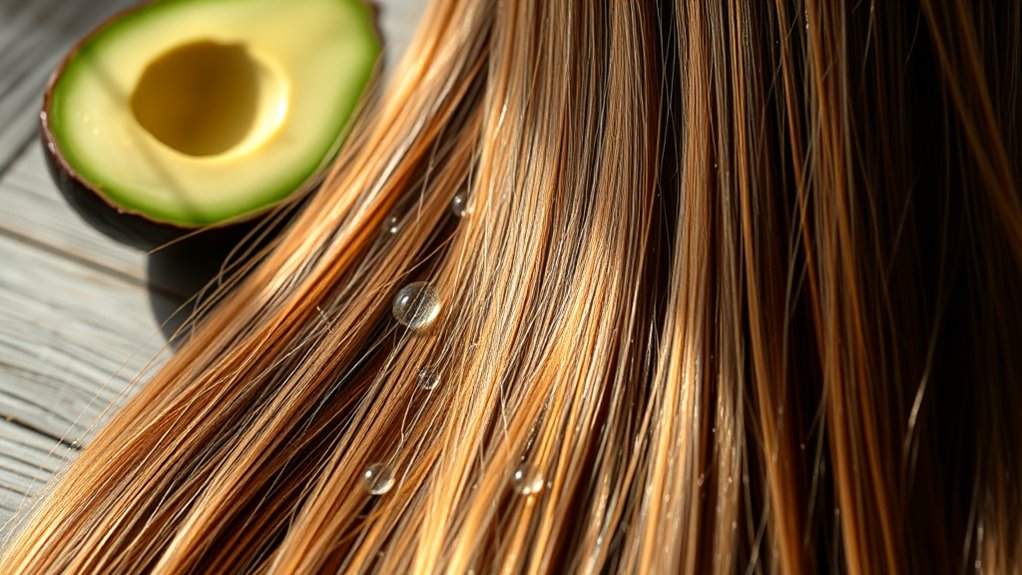The Secret to Washing Your Hair Without Damage
When it comes to washing your hair without causing damage, understanding your hair type is crucial. Different hair types require specific care to maintain their health and shine. If you think a one-size-fits-all approach works, you might be surprised. Choosing the right products and techniques can make a significant difference. Let’s explore the best practices that will keep your hair looking vibrant and strong, starting with the basics of shampoo selection.
Key Takeaways
- Identify your hair type to choose appropriate washing techniques and products that cater to its specific needs.
- Use lukewarm or cool water to cleanse hair without stripping away natural oils.
- Select sulfate-free shampoos with natural ingredients to maintain moisture and prevent damage.
- Gently massage your scalp during washing to minimize irritation and breakage while promoting circulation.
- Utilize microfiber towels and air drying techniques to reduce friction and frizz in your hair.
Understanding Your Hair Type
How well do you know your hair type?
Understanding your hair type is essential for effective care and maintenance.
Different types—straight, wavy, curly, and coily—require specific washing techniques.
To keep your hair healthy, use gentle hair washing tips like avoiding hot water, which can strip natural oils.
Instead, opt for lukewarm or cool water to cleanse without causing damage.
Additionally, limit washing frequency to prevent dryness.
Always apply shampoo to your scalp, massaging gently, and let the suds cleanse the lengths.
Incorporating gentle hair washing techniques into your routine can further enhance the health of your hair.
Choosing the Right Shampoo
What’s the best way to choose a shampoo that suits your needs?
Start by identifying your hair type—fine, thick, curly, or straight—as each requires different formulations.
Look for shampoos tailored to your specific concerns, like dryness or color-treated hair.
Check the ingredient list; avoid sulfates if you have sensitive skin or dry hair, as they can strip natural oils.
Opt for natural ingredients like aloe or coconut oil for added moisture.
Finally, consider your scalp health; if you have dandruff, seek shampoos with targeted treatments. Additionally, selecting a shampoo based on the right ingredients can significantly improve your hair’s overall health and shine.
The Importance of Conditioning
Conditioning your hair is just as crucial as choosing the right shampoo, and it can significantly impact your hair’s health and appearance.
A good conditioner restores moisture, smooths the hair cuticle, and reduces frizz, making your hair more manageable.
It helps prevent breakage by strengthening strands and protecting against environmental damage.
Additionally, conditioners often contain ingredients that add shine and softness, enhancing your hair’s overall look.
To maximize benefits, choose a conditioner suited to your hair type, whether it’s dry, oily, or color-treated.
Regular conditioning can transform your hair, leaving it looking vibrant and healthy.
Don’t skip this essential step! Proper washing techniques can further enhance the effectiveness of your conditioning routine.
Techniques for Gentle Washing
When washing your hair, employing gentle techniques can make a world of difference in preserving its health and vitality. Start by using lukewarm water to avoid stripping natural oils. Apply a small amount of sulfate-free shampoo, focusing on your scalp and roots, and gently massage with your fingertips, not nails. Rinse thoroughly to prevent residue buildup. Additionally, incorporating gentle hair washing tips can further enhance your hair’s resilience against damage.
| Technique | Benefits |
|---|---|
| Lukewarm Water | Prevents oil stripping |
| Sulfate-Free Shampoo | Maintains moisture balance |
| Gentle Scalp Massage | Reduces irritation and breakage |
These simple practices significantly enhance your hair’s condition.
Drying Methods That Prevent Damage
When it comes to drying your hair, choosing the right method can significantly reduce damage.
Microfiber towels absorb moisture efficiently, minimizing friction, while air drying allows your hair to maintain its natural structure. If you prefer blow drying, using a heat protectant and the right technique can help keep your strands healthy and vibrant. Additionally, incorporating effective techniques for frizz control can further enhance the smoothness of your hair.
Microfiber Towels Benefits
Have you ever wondered why microfiber towels are becoming the go-to choice for hair drying?
These towels are specifically designed to absorb moisture quickly while being gentle on your hair.
Unlike traditional cotton towels, microfiber reduces friction, significantly lowering the risk of breakage and frizz.
Their ultra-fine fibers trap water efficiently, allowing your hair to dry faster without heat exposure.
Plus, they’re lightweight and compact, making them perfect for travel.
By using a microfiber towel, you’re not just drying your hair; you’re investing in its health and longevity, ensuring it stays shiny and strong.
Embrace the benefits of microfiber for optimal results!
Air Drying Techniques
Microfiber towels set the stage for effective air drying techniques that safeguard your hair from damage.
After gently blotting your hair with a microfiber towel, consider braiding or twisting your damp locks to reduce frizz and enhance waves.
Avoid vigorous rubbing, which can lead to breakage.
If you have curly or textured hair, try the “plopping” method by placing your curls in a t-shirt to maintain their shape.
Additionally, keep your hair away from direct sunlight, as UV rays can weaken strands.
Allow your hair to dry naturally, giving it the best chance to remain healthy and vibrant.
Blow Drying Tips
How can you achieve a sleek blowout without damaging your hair?
Start by towel-drying your hair gently to remove excess moisture. Use a heat protectant spray to shield your strands from high temperatures.
Section your hair for more manageable drying and keep your blow dryer at least six inches away. Choose a nozzle attachment to direct airflow and prevent frizz.
Utilize a round brush for added volume and smoothness, pulling the hair taut as you dry. Finish with a cool shot to seal in your style and enhance shine.
Maintaining Hair Health Between Washes
To keep your hair healthy between washes, focus on essential scalp care and protective styling techniques.
Regularly massaging your scalp can improve circulation and promote hair growth, while styles that minimize tension help prevent breakage.
Incorporating these practices into your routine will ensure your hair remains strong and vibrant.
Scalp Care Essentials
What steps can you take to ensure your scalp remains healthy between washes?
First, consider a regular scalp massage to stimulate blood circulation, promoting hair growth.
Use a gentle exfoliating scrub once a week to remove dead skin cells and product buildup.
Keep your scalp moisturized with natural oils like jojoba or tea tree oil to prevent dryness and irritation.
Avoid tight hairstyles that can stress your scalp and hair follicles.
Lastly, maintain a balanced diet rich in vitamins and minerals, as this nourishes both your scalp and hair from the inside out.
Prioritizing scalp care is essential for overall hair health.
Protective Styling Techniques
Have you considered how protective styling can play a crucial role in maintaining your hair health between washes? These techniques not only minimize damage but also promote growth. Here are some effective styles you might want to try:
| Style | Benefits |
|---|---|
| Braids | Reduces tangles and breakage |
| Buns | Low manipulation, keeps ends tucked |
| Twists | Adds moisture retention |
Incorporating these styles can help shield your hair from environmental stressors while keeping it healthy and vibrant. Remember to use gentle products to further support your hair’s integrity between washes.
